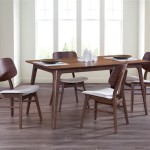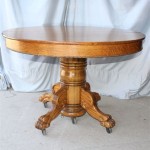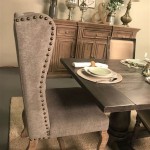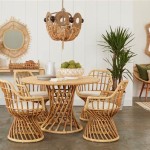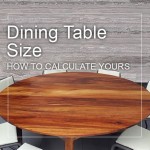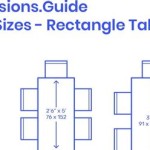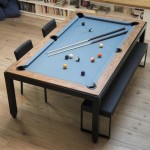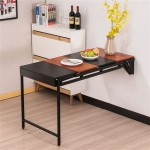Extra Long Dining Table: Seating Twelve in Style and Comfort
The demand for extra long dining tables capable of seating twelve individuals has steadily increased. This trend reflects a shift towards larger family gatherings, increased entertaining, and a desire for spaces that foster connection and shared experiences. Choosing the right extra long dining table, however, involves careful consideration of size, style, material, and overall room aesthetic. This article elucidates the key factors involved in selecting an appropriate extra long dining table that comfortably seats twelve.
Extra long dining tables offer more than just increased seating capacity. They serve as a focal point within a dining room, dictating the flow of traffic and influencing the overall ambiance. A well-chosen table can elevate the aesthetic appeal of the space, contributing to a sense of grandeur and hospitality. Furthermore, owning such a table eliminates the need for makeshift arrangements or multiple tables during large gatherings, providing a seamless and elegant dining experience.
Understanding Size and Space Requirements
One of the most critical aspects of selecting an extra long dining table is determining the optimal size for the available space. While the table needs to comfortably accommodate twelve diners, it is equally important to ensure sufficient room around the table for ease of movement. A minimum of 36 inches, and ideally 48 inches, should be maintained between the table's edge and surrounding walls or furniture. This allowance ensures that individuals can freely pull out chairs and navigate the dining area without obstruction.
Extra long dining tables typically range from 96 inches to 144 inches in length to comfortably seat twelve. The specific length required will depend on the width of the chairs being used and the desired spacing between diners. In general, allowing approximately 24 inches of width per person provides adequate personal space. Therefore, a table with a length of 120 inches (10 feet) is often sufficient, but adjusting this dimension based on chair size and individual preferences is necessary.
Beyond the table's dimensions, the shape also plays a significant role in space utilization. Rectangular tables are the most common option for seating twelve, offering a classic and efficient configuration. However, oval or racetrack-shaped tables can also be effective, particularly in narrower rooms. These shapes tend to offer a slightly more intimate dining experience and can facilitate conversation more easily.
Before purchasing an extra long dining table, thoroughly measure the dining area. Consider the placement of any existing furniture, such as sideboards or buffets, and ensure that the table will not impede access to these items. Using painter's tape to mark the table's dimensions on the floor can provide a visual representation of the space it will occupy and help in making informed decisions.
Material Choices and Durability
The material from which a dining table is constructed significantly impacts its aesthetic appeal, durability, and maintenance requirements. Common materials include solid wood, wood veneers, metal, glass, and stone. Each material offers unique advantages and disadvantages that should be carefully considered in relation to individual needs and preferences.
Solid wood is a popular choice for dining tables due to its inherent strength, beauty, and longevity. Hardwoods like oak, maple, walnut, and cherry are particularly desirable due to their resistance to dents and scratches. Solid wood tables can be stained or painted to match any décor and can be refinished over time to maintain their appearance. However, solid wood is susceptible to changes in humidity, which can cause warping or cracking if not properly cared for. Regular oiling or polishing is typically required to maintain the wood's natural moisture levels.
Wood veneers offer a more affordable alternative to solid wood, providing a similar aesthetic appearance at a lower cost. Veneers consist of a thin layer of real wood adhered to a core of engineered wood, such as plywood or MDF. Veneered tables are generally more stable than solid wood tables and less prone to warping. However, veneers are more susceptible to damage from scratches or dents, as the thin wood layer can be easily penetrated. Repairing damaged veneers can be challenging and may require professional assistance.
Metal dining tables offer a modern and industrial aesthetic. Steel, iron, and aluminum are common materials used in their construction. Metal tables are exceptionally durable and resistant to scratches, dents, and stains. They are also relatively easy to clean and maintain, requiring only occasional wiping with a damp cloth. However, metal tables can feel cold and impersonal compared to wood tables. Pairing them with upholstered chairs and warm-toned accessories can help to soften their appearance.
Glass dining tables add a touch of elegance and sophistication to any dining room. Tempered glass is the preferred choice for tabletops due to its strength and safety. Tempered glass is significantly more resistant to breakage than regular glass and shatters into small, blunt pieces if broken. Glass tables are easy to clean and do not stain easily. However, they are prone to fingerprints and smudges, requiring frequent cleaning to maintain their pristine appearance. The transparency of glass can also make the dining room feel more spacious.
Stone dining tables, such as those made from marble or granite, offer a luxurious and durable option. Stone tables are incredibly heavy and resistant to scratches, heat, and stains. They are also relatively easy to clean. However, stone can be porous and susceptible to staining if not properly sealed. Stone tables are also more expensive than tables made from other materials.
Style and Design Considerations
The style of an extra long dining table should complement the overall décor of the dining room and reflect individual aesthetic preferences. A wide range of styles are available, from traditional and formal to contemporary and minimalist. Choosing a style that harmonizes with the existing furniture and architectural features of the space is crucial for creating a cohesive and visually appealing environment.
Traditional dining tables often feature ornate details, such as carved legs, decorative aprons, and rich wood finishes. These tables typically evoke a sense of formality and elegance, suitable for more traditional homes. Complementing traditional tables with upholstered chairs and classic tableware can enhance their sophisticated appeal.
Contemporary dining tables tend to have clean lines, simple shapes, and minimalist details. These tables often incorporate materials such as metal, glass, and engineered wood. Contemporary tables are versatile and can be adapted to a variety of décor styles, from modern and industrial to Scandinavian and transitional. Pairing them with sleek chairs and streamlined accessories can enhance their modern appeal.
Rustic dining tables celebrate the natural beauty of wood, often featuring distressed finishes, exposed knots, and live edges. These tables evoke a sense of warmth and informality, suitable for more casual dining spaces. Complementing rustic tables with wooden chairs, woven textiles, and natural elements can enhance their organic charm.
The design of the table base is also an important consideration. Common base styles include trestle bases, pedestal bases, and four-legged bases. Trestle bases offer a sturdy and visually appealing option, particularly for longer tables. Pedestal bases provide ample legroom and can be particularly suitable for round or oval tables. Four-legged bases are the most common and versatile option, providing stability and a classic aesthetic.
The shape of the tabletop can also influence the overall style of the dining room. Rectangular tables are the most common and versatile, suitable for a wide range of dining spaces. Round tables promote conversation and create a more intimate dining experience. Oval tables offer a compromise between rectangular and round shapes, providing ample seating while maintaining a sense of intimacy.
In addition to the table itself, the choice of chairs is crucial for creating a comfortable and stylish dining experience. Chairs should be ergonomically designed to provide adequate support and comfort for extended periods of sitting. The style of the chairs should complement the style of the table, creating a cohesive and harmonious look. Consider factors such as seat height, backrest angle, and upholstery material when selecting chairs.

30 Ideas Extendable Dining Table Seats 12 Extendablediningroomtableseats12 Extendabledin Large Room Set Seat

This Extra Long Dining Table Seats 12 People

Large Dining Table Seats 10 12 14 16 People Huge Big Tables

Large Dark Wood Extendable Dining Table Seats 12 Madie Furniture123

Extra Wide 12 14 16 18 Seat Dining Table Infinity Range Solid Oak Topany Colour

Table Size Seating Capacity Round Rectangular More

Extra Wide 12 14 16 18 Seat Dining Table Infinity Range Solid Oak Topany Colour

Double Pedestal Dining Table Seats 12 2024 Deltabahrain Com

Extra Large Extendable Dining Table Mahogany For

Amazing Antique Solid Oak Draw Leaf Extending French Farmhouse Dining Table Rustic Country 6ft 11ft Extra Wide 330cm Seats 8 10 12 14 Etsy

